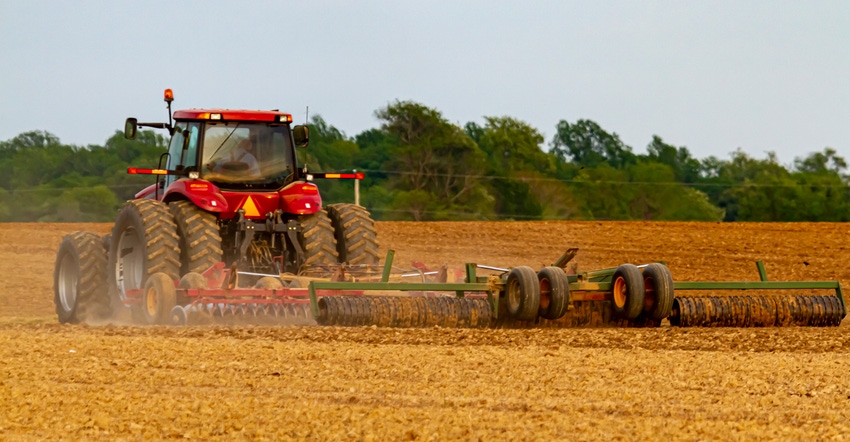June 3, 2022

With diesel fuel prices hovering above $5 per gallon and weather-related planting delays, producers are looking for ways to improve tractor performance and fuel efficiency.
One of the best ways to accomplish this is to inflate radial tires to the lowest recommended pressure for the load they carry before performing fieldwork.
A survey conducted in Oklahoma found that only 45% of the tractor tires were within the recommended tire inflation ranges. The benefits of proper tire inflation were depicted during a field demonstration at Michigan State University's Ag Expo, where identical tractors were hitched with a cable and pulley system to a third tractor pulling a high-draft tillage tool.
The front tractor with properly inflated tires consistently performed better than the trailing tractor with slightly overinflated tires. The tractor with the properly inflated tires will consume less fuel and perform field operations in less time.
To maintain vehicle stability, radial tires require higher pressures for road speeds than they do for field operations. Because of this, some producers inflate their tires to the recommended pressures required for road speeds, and don’t reduce the pressure before performing field operations. Others run their tires at the lower field pressures when traveling on the road (hopefully at reduced speeds).
A third group of producers run their tires at a compromise level between the optimum field pressure and road pressure. None of these scenarios are ideal. The ultimate solution is to install an automatic tire inflation system. This technology enables producers to adjust tire pressures to the optimum levels for road travel and field operations with the touch of a button.
Tire inflation recommendations
Weigh each axle after the tractor has been properly ballasted. If fully mounted equipment will be transported, weigh the rear axle with the equipment in the raised position. If liquid manure tanks or grain carts will be towed, add the loaded tongue weight of the equipment to the rear axle weight. Manufacturers can provide loaded tongue weights for their equipment. Determine the weight carried per tire by dividing the axle weight by the number of tires.
Use load and inflation tables available from the tire manufacturer and inflate tires to the lowest recommended pressure for the weight carried per tire. Adjust inflation pressures whenever axle loads change.
Use a high-quality tire gauge that is easy to read, accurate, consistent and graduated in at least 1 pound-per-square-inch increments. Gauges designed for use on ATV tires are recommended. Digital, pencil and dial gauges will all work. However, dial gauges tend to be the most easily damaged when dropped.
Check the inflation pressure often and when the tires are cold, preferably in the morning. Gauge readings can be 1 to 3 psi higher when the tires are warm.
If fluid ballast has been added to the tires, measure inflation pressure with the valve stem in the same position for all tires. Pressures at the bottom of the tire can be 1.5 psi higher than at the top.
For optimum performance, set all tires on an axle to the same pressure.
By properly inflating radial tires, you will reduce fuel consumption, finish your fieldwork in less time and reduce soil compaction.
Staton is a field crop educator with Michigan State University Extension.
Source: MSU Extension, which is solely responsible for the information provided and is wholly owned by the source. Informa Business Media and all its subsidiaries are not responsible for any of the content contained in this information asset.
You May Also Like




